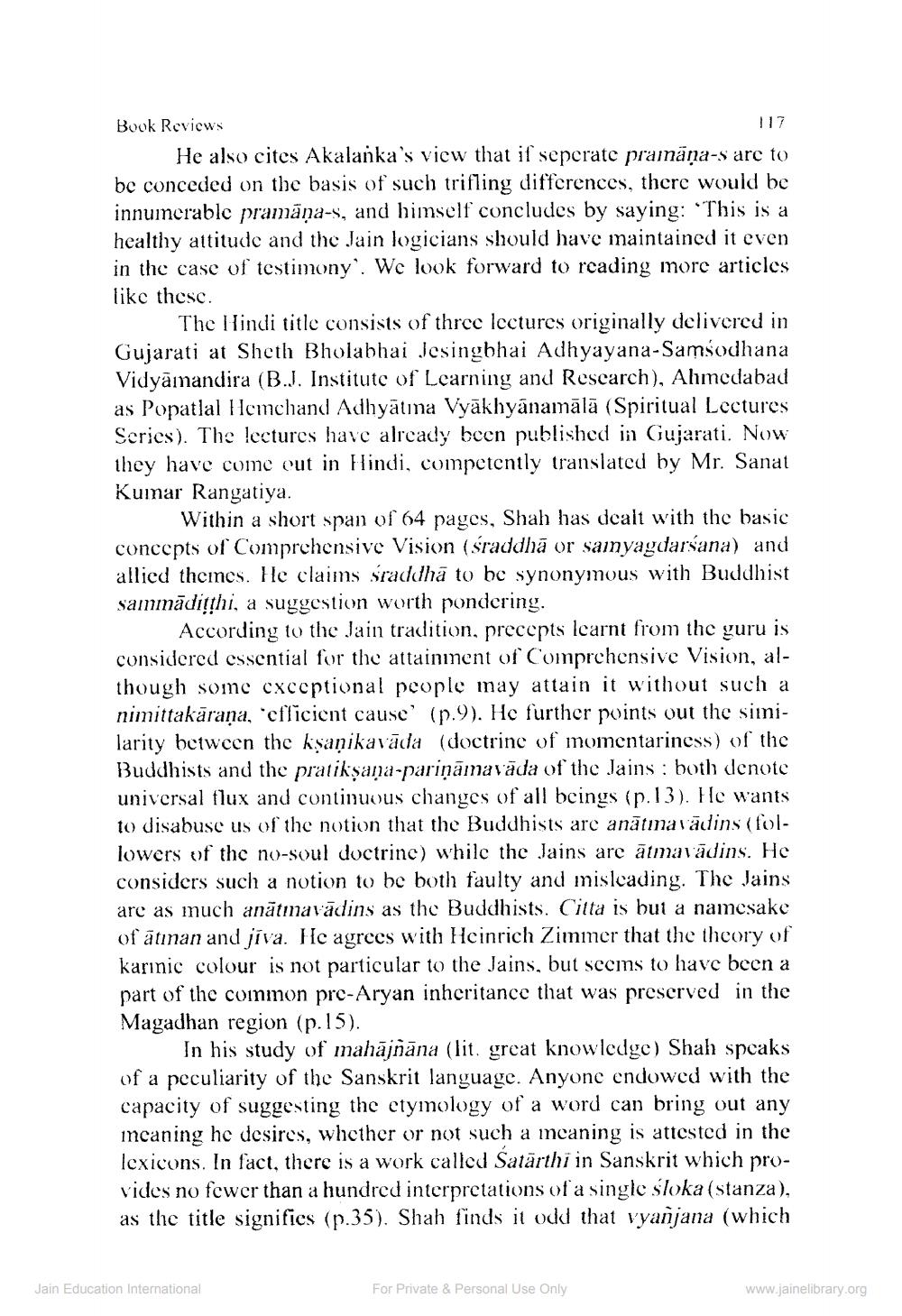________________
Book Reviews
He also cites Akalanka's view that if seperate pranäņa-s are to be conceded on the basis of such trifling differences, there would be innuinerable pramäņa-s, and himself concludes by saying: "This is a healthy attitude and the Jain logicians should have maintained it even in the case of testimony'. We look forward to reading more articles like these.
The Hindi title consists of three lectures originally delivered in Gujarati at Sheth Bholabhai Jesingbhai Adhyayana-Samsodhana Vidyāmandira (B.J. Institute of Learning and Research), Ahmedabad as Popatlal Hemchand Adhyatina Vyākhyānamālā (Spiritual Lectures Series). The lectures have already been published in Gujarati. Now they have come eut in Hindi, competently translated by Mr. Sanat Kumar Rangatiya.
Within a short span of 64 pages, Shah has dealt with the basic concepts of Comprehensive Vision (sraddhā or samyagdarsana) and allied themcs. He claims sraddhā to be synonymous with Buddhist sammādithi, a suggestion worth pondering.
According to the Jain tradition, precepts learnt from the guru is considered essential for the attaininent of Comprehensive Vision, although some exceptional people may attain it without such a nimittakārana, 'cflicient cause' (p.9). He further points out the siinilarity between the ksanikavāda (doctrine of momentariness) of the Buddhists and the pratiksana-parināmavāda of the Jains : both denote universal flux and continuous changes of all beings (p.13). He wants to disabuse us of the notion that the Buddhists are anātinavādins (followers of the no-soul doctrine) while the Jains are ātmavādins. He considers such a notion to be both faulty and misleading. The Jains are as much anātmavādins as the Buddhists. Citta is but a namesake of ātinan and jiva. He agrees with Heinrich Zimmer that the theory of karinic colour is not particular to the Jains, but seems to have been a part of the common pre-Aryan inheritance that was preserved in the Magadhan region (p.15).
In his study of mahājnana (lit. great knowledge) Shah speaks of a peculiarity of the Sanskrit language. Anyone endowed with the capacity of suggesting the etymology of a word can bring out any mcaning he desires, whether or not such a meaning is attested in the lexicons. In fact, there is a work called Satarthi in Sanskrit which provides no fewer than a hundred interpretations of a single sloka (stanza), as the title signifies (p.35). Shah finds it odd that vyanjana (which
Jain Education International
For Private & Personal Use Only
www.jainelibrary.org




